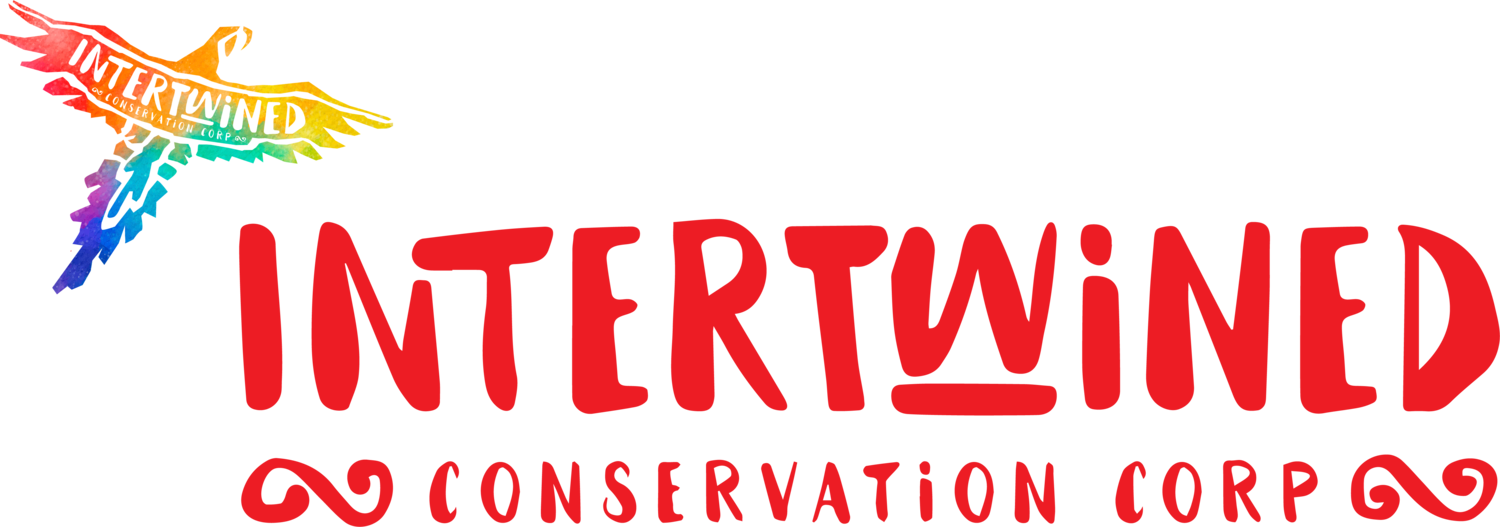Meet the Flock
Birds of a feather flock together—except among our ambassador parrot flock at Intertwined Conservation, where feathers range in size and color and our birds flocked together only due to random twists of fate. As different as our ambassadors are in species, personality, and background story, each of them shares the goal of furthering Intertwined’s message of conservation.
The parrots are the highlight of our education program, as they catch the students’ attention by bringing the stories of their species right before the kids’ eyes. Most of the students have only ever seen these types of birds in cages, so watching them in majestic flight helps kids understand that parrots are wild, complex animals that don’t belong as pets.
Our ambassadors, some of whom were in bad situations as pets, now represent their species in the classrooms we visit. We’d like to introduce these incredible birds to our online community so you can hear their stories too.
Panama
Panama, a 16-year-old Panama Amazon, was most likely bred in captivity before being purchased from a pet shop and passed along from home to home for 14 years—a pretty common situation for pet parrots. Panama found her fifth and final home with our founder Jenna about two years ago. Jenna originally took her in as a foster, but it took Panama so long to adjust that another change would have been too stressful. Panama is now the most vocal of all of our ambassadors, and she entertains countless classrooms with her unique vocalizations and vocabulary.
Katrina
Named after the hurricane that hit the same summer she was hatched, Katrina is 14 years old. She is a Scarlet Macaw—the only one of our ambassadors whose species is native to Costa Rica. Her parents were smuggled across the border and confiscated, relinquished to the zoo, and then passed to a couple more homes. Despite having all of her flight feathers, she never flew in the large aviary where she was kept with other macaws, and she was the loner of the group. A year and a half ago she came to live with Jenna and began to work for the education program.
Polly
Our Female African Grey Polly was rescued from an abusive home. She was kept in a fraternity house, and, despite being abused by males, still prefers men to women. During education events, Polly usually chooses not to participate, she’s a shy one.
Doobie
Another Congo African Grey, also from an abusive home. Doobie was confiscated from a drug lord’s house (see what we did there.) Sometimes Doob is used as a second ambassador in the classroom and is a good talker, which is exciting for the kids. African Greys recently were bumped up from a threatened species to an endangered species. As the most trafficked of all parrots, important for Doobie to share his story of abuse.
Sadie
She’s our Green Wing Macaw, and at the time of this post, our youngest and most enthusiastic ambassador. She was given to us as a donation by Paul Colo, a highly respected breeder who began his breeding program to help off-set the illegal trade of parrots and end poaching in the wild. He gave Intertwined a chick so they could raise an ambassador for conservation. Jenna describes Sadie as being in her “terrible twos—she wants to be everywhere, mouth everything, and is the most high-energy and curious of everyone.” While most of the rescue birds have unpredictable moods and don’t always choose to participate in education sessions, Sadie is our go-to ambassador. She loves to be in the classroom and usually doesn’t want to get back in her crate to leave.
The ambassador birds lead a life of luxury at Intertwined, starting off each day with a huge bowl of fresh fruit and veggies while sun-bathing in their aviary in Escondido. We make sure that they always have the choice to participate in education sessions, and when they do participate their impact is obvious. As one of the first graders we visited eloquently put it: “I really like parrots, but I never wanted to save one until I saw them in person.”





